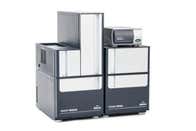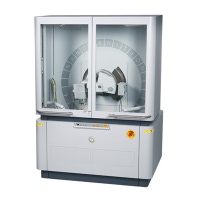
OMNISEC
The world’s most advanced multi-detector GPC/SEC system
Multi-detector GPC for characterizing the structure of polymers and bio-molecules
The physical and even the chemical properties of a polymer in a final manufactured product can be closely related to the polymer structure.
Types of polymer structure:

The world’s most advanced multi-detector GPC/SEC system
Multi-detector SEC, such as the OMNISEC, can be used to determine a number of the factors that determine structure:
Structure is determined using a combination of an intrinsic viscosity detector that is sensitive to density, and a light scattering detector that provides molecular weight. These parameters are used to construct a Mark–Houwink plot from which a range of structural information can be deduced.
Acrylonitrile-butadiene copolymers, commonly called nitrile rubbers (NBR), are used widely for adhesive compounding, and gloves used for examination and cleaning.
The composition of the copolymers, the polymer cross-linking and branching as well as the molecular weight of NBR affect the macroscopic properties of NBR such as flexibility and puncture resistance.

OMNISECThe world’s most advanced multi-detector GPC/SEC system |

Zetasizer Advance RangeLight Scattering for every application |

Empyrean Nano EditionVersatile X-ray scattering platform |
|
|---|---|---|---|
| Measurement type | |||
| Molecular structure | |||
| Molecular size | |||
| Molecular weight | |||
| Technology | |||
| Gel Permeation Chromatography | |||
| Size Exclusion Chromatography (SEC) | |||
| Dynamic Light Scattering | |||
| X-ray Diffraction (XRD) | |||